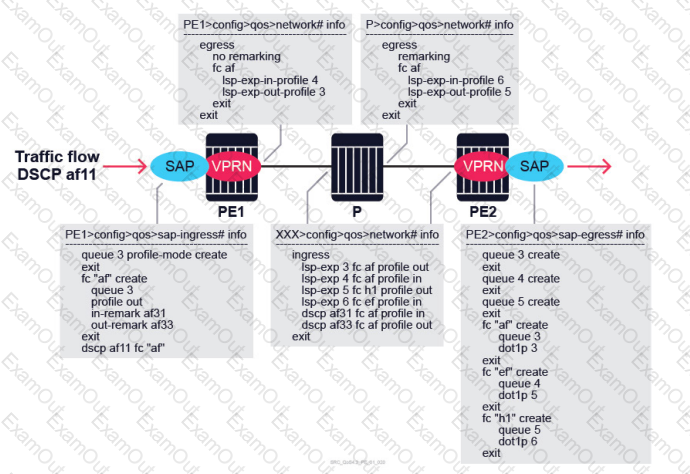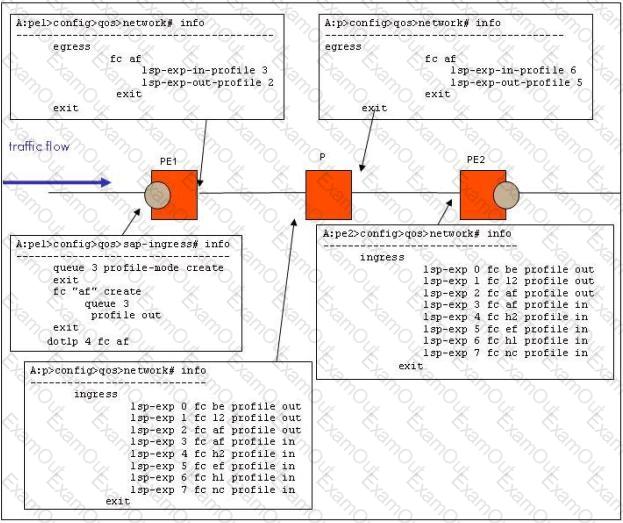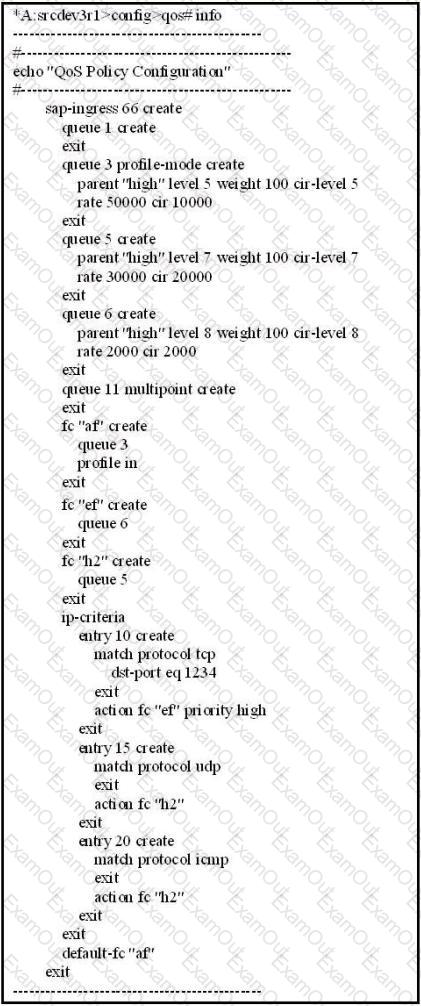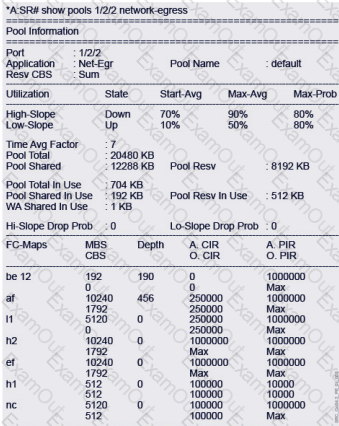The IP ToS field consists of ________ bits, of which ________are used. The _________most significant (first) bits define precedence.
Which of the following rate-limiting approaches are used on the Nokia 7750 SR? (Choose two)
Which priority-mode queue parameter may influence both the profile marking, and scheduling priority of a queue?
Packets arrive at the VPRN SAP on PE1 with DSCP marking of af11 and Dot1p of 2. According to the QoS policies applied at routers PE1, P, and PE2, what is the dot1p value of packets egressing routerPE2? (All the SDPs are MPLS-encapsulated, and all interfaces are using their default trust states).

Click the exhibit button below. Traffic arriving at router PE 1 is marked with a dot1p value of 4. Given the network policies applied on the routers in the diagram below, what is the EXP value of packets arriving at router PE 2?

Note: Only relevant portions of the network policy are shown.
Which of the following statements describes a queue’s weight parameter that is used in the hierarchical scheduling?
Which of the following policies does NOT exist by default on a network port?

According to the configuration shown above, which of the following about the classification and marking of self- generated BGP traffic is TRUE?
Click the exhibit button below. Given the SAP-ingress policy, which of the following statements are FALSE? (Choose three)

What can be learned from the output of the command “show pools 1/2/2 network-egress” on the GigE port?


